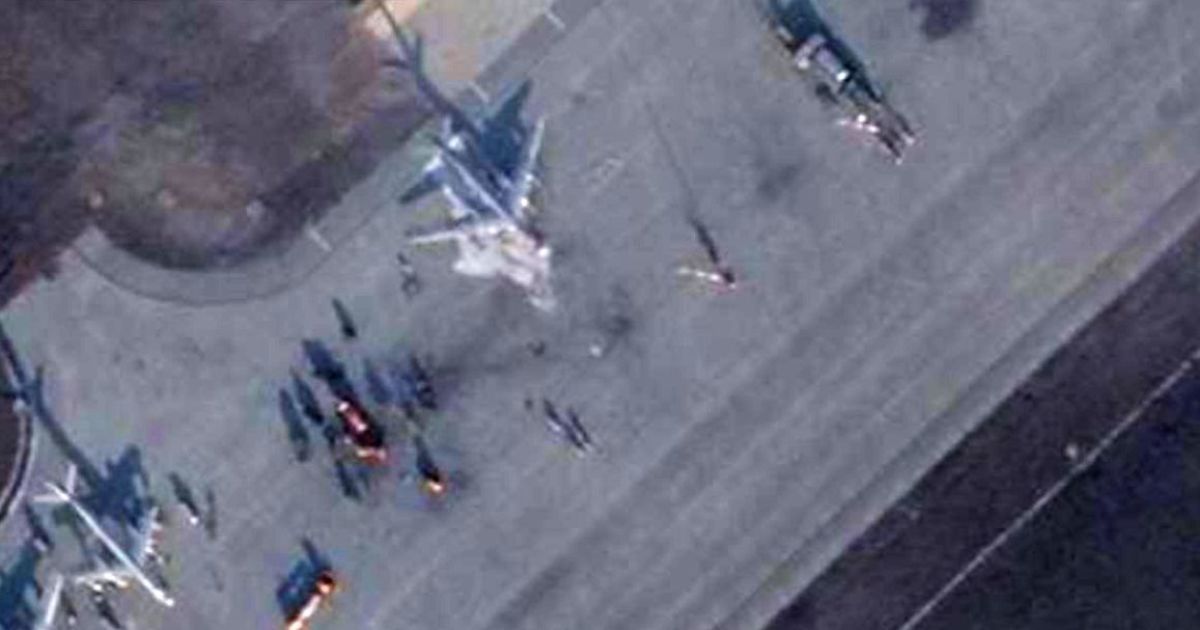The Russian Ministry of Defense's statement that Ukraine and its Soviet-made drones were involved in the explosions at the Engels and Diaghilev airfields acknowledges the "shameful weakness" of the Russian Federation's ability to protect its military facilities.
This is stated in an article by Business Insider, which refers to Samuel Bendett, a military expert from the Center for Naval Analysis in Washington.
Thus, the expert drew attention to the fact that Russian airfields, where nuclear strategic bombers are stationed, are located hundreds of kilometers from the border with Ukraine.
"It's surprising.
Why didn't Russian air defenses track and identify targets so deep inside the country?
" Bendett asks.
The publication reminds that the Ministry of Defense of the Russian Federation claimed that the attacks on airfields were carried out by "Soviet-era" drones.
Some observers believe that they could have meant the
Tu-141 reconnaissance drone
, first produced in the 1970s.
"Basically, it's not so much a UAV as a flying missile. It's not complicated. And it probably makes a lot of noise when it flies," said a military expert.
"Again, it's one thing to hit something, say, at a distance of 100 to 200 kilometers from the border. It's another thing to hit something 600 kilometers away," the expert added.
Bendett also does not rule out that Russia, by so openly admitting its own vulnerability after accusing Ukraine of attacking airfields, seeks to cover up an even more inconvenient version of how the explosions happened.
According to the assumptions of military observers, the airfields could be attacked by Ukrainian agents on the territory of Russia.
The publication notes that if the attacks were indeed carried out with the help of a Ukrainian drone, this
may indicate Ukraine's ability to inflict damage deep into the territory of the Russian Federation
.
And Moscow is probably not ready for such a scenario.
According to the authors of the article, such isolated attacks are unlikely to change the general course of the war.
However, such strikes may exert psychological pressure and force the Kremlin to spend more resources on defense of its capabilities, which were previously considered to be not in need of significant defense.
"We don't know if it was actually a drone. We don't know if it was a Tu-141. But it was something that was definitely effective," Bendett stressed.
The symbolic nature
of attacks on Russian airfields is more important than the real damage to aviation at these facilities.
This opinion was expressed by Justin Bronk, a senior researcher at the British think tank Royal United Services Institute.
It should be noted that military expert Mykhailo Prytula also put forward the version that Ukraine could strike Russian airfields with the help of Tu-141 drones.
They can cover up to 1000 km.
Attacks on airfields in Russia: what is known
Explosions occurred at Diaghilev and Engels airfields in Russia, which damaged two Tu-95 strategic bombers.
Note that these airfields are located almost 500 km deep into the territory of the Russian Federation.
The Russian Ministry of Defense said that the attacks were carried out by "Soviet-made jet drones", as a result of which several soldiers were killed and several others were injured.
In the GUR, the Ministry of Defense of Ukraine stated that they could neither confirm nor deny the state's involvement in these attacks on Russian airfields.
Note that another explosion occurred on the night of December 6 at the airfield in Kursk.
A drone attack was also reported there.
Read also:
"One of the biggest strategically important failures" - Britain's intelligence on explosions at Russian airfields
Attacks on Russian airfields: US military experts assessed Ukraine's technical potential to retake Crimea
The war is against Putin: an American expert predicts new attacks on Russian military bases
Subscribe to our
Telegram
and
Viber
channels .
